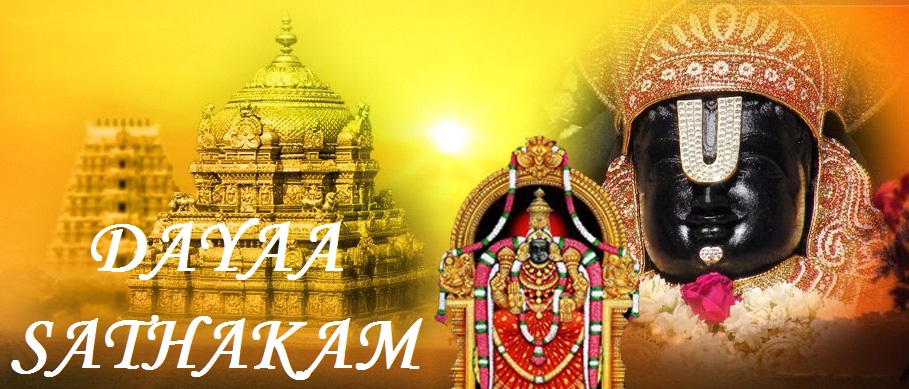xipraM praaptaa vR^iShagiri patiM xatrabandh.hvaadayaste.
vishvaachaaryaa vidhi shiva mukhaaH svaadhikaaroparudhdaaH
manye maataa jaDa iva sute vatsalaa maadR^ishe tvam.h..50
(MEANING):
Oh DayA Devi! You have taken the form of SadAchAryAs. You perform upadEsams for the Chethanams in the role of an AchAryan and bless them with Sathgathi. Those chEthanams, who perform SaraNAgathy pursuant to Your upadEsam reach Your Lord at ThiruvEnkatam and are blessed with Moksham. It is like Kshathrabhandhu, who gained an AchAryan to achieve Moksham. Even the sinners receiving Your karuNA KatAkshams perform Prapatthi and thereby gain Moksham in the current birth already. If the chEthanam does not have the benefit of Your merciful glances, it will never attain Moksham, even if it has the best of credentials. For instance, Brahma, Sivan et al have not yet attained Moksham inspite of their high ranks because they have not been blessed with Your Kataakshams. They are bound by their KarmAs associated with their positions. Until they have these positions,they can not attain Moksham. When their term is over as BrahmA or Sivan, they can undertake the upAyam of Prapatthi, gain your katAkshams and thereafter attain Moksham. The king Kshathrabhanthu was a great sinner but he gained MokshAnugraham because of the power of a SadAchAryan. BrahmA has Jn~Anam and anushtAnam and yet did not gain Moksham. There is a world of difference between them.In the world, a Mother showers her special affection on the child of hers, which is not very bright and does not have much Jn~Anam. Kshathrabhandhu was one such chEthanam, who committed many aparAdhams and did not have Jn~Anam or Sakthi. He like us was anakinchanan. You take pity on our helpless state and correct us to be qualified to stand before Your Lord and perform Prapatthi for us. ThiruvEnkatamudayAn grants the boons that You request on behalf of us. This is a wonderful feat! These auspicious events happen because of the glories of Your KatAkshams

No comments:
Post a Comment